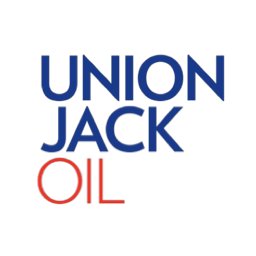REITS are the topic of conversation when Hardman and Co’s Analyst Mike Foster caught up with DirectorsTalk for an exclusive interview.
Q1: Hardman and Co has written a report suggesting that some property companies can generate income that’s more secure than most of the market. This seems strange, with leading property shares, like British Land, down 628p at the start of the year to just 397p. Are property stocks safe?
A1: In the past couple of decades, and especially since 2008, investors have understood that cumulative income is what generates returns – much more than capital gains. Property companies in existence before 2008 typically tried to make investor returns by capital gains, rather than by income. In our report, we look at these income-based property companies, and we find that they have been outperforming in years in which the market has gone up and outperforming in the years – like 2020 so far – in which the market has gone down.
Q2: So, this is something relevant to all investors, but especially to those looking for income?
A2: Yes. Investors have always sought income, but they are doing so all the more now – for three reasons, as we see it: i) with fewer defined benefit pension schemes, there are increasingly more funds looked after by individuals or by wealth managers who need to pay regular pensions; ii) the current crisis means interest rates are lower, and also a huge raft of the very biggest dividend payers have permanently reduced their payouts; iii) it is interesting to see data making it very clear that private individuals have been the ones buying shares since March, in much greater proportion than normal. It is these income-seeking investors who are buying the market.
Q3: If you are saying that investors can pick stocks that have less risky tenants and lease contracts and it’s those safer stocks that do better when times are bad, that is pretty easy to see. Why do they go up more when times are good?
A3: Our report looks back to 2019, when safe stocks outperformed the index of leading UK property stocks. Many of the latter owned retail assets, which dragged them down. But it is much more fundamental than that. Investors are disillusioned with the concept of buying into management teams seeking alpha through sector-picking, even when, usually, that means giving investors dividend yields much lower than the safer stocks. There are plenty of assets around with long leases, good tenants, and value-for-money rents. We are surprised that the large-cap stocks and the large funds have not invested much here. So, we selected a basket of 16 from an earlier report that we published in March 2019, and the report we have just published looks at how they did and how they are placed for the future. And they have done pretty well.
Q4: You say that they have done pretty well. Does that mean they have gone up or they have gone down?
A4: In 2020, they have gone down by about 12% – that is the capital value of the basket we picked in March 2019. The top 100 UK shares have gone down by about 18% YTD. The wider UK quoted property sector has fallen by the mid 20’s percent. We are adamant that many (not all) of the share price falls in our 16 selected property stocks are caused by the noise from the rest of the market, and so that is one of the reasons why we have chosen to look at them again.
Q5: What do they do? What do these stocks invest in?
A5: First, they have a fixed investment style, and most of them have a fixed asset class they invest in, and nothing else. For example, the one that has been around the longest, Primary Health Properties, has always invested exclusively in primary medical assets. So, first-off, investors know what they are investing in. Second, the management costs tend to be much more efficient than the wider-ranging multi-sector, multi-strategy property stocks. Third, even the most secure of these asset classes – like the medical properties, where the government pays the rent – yield nearly 4.5%. Many asset classes in which other specialist property companies invest yield 6% or more. Looking at the 16, 30% of the assets in which they invest are healthcare assets; the next most significant are logistics, and other sectors too, but the large majority of these assets have three things in common.
Q6: So, most of the property stocks you look at invest in different types of assets but ones that have things in common. Can you say more on that?
A6: They typically offer value for money to occupiers and are in the newer investor classes. That typically means that occupiers plan to stay a long time, and so are willing counterparts to long leases. Because they offer value for money, the cost to a tenant of a move is significant. We mentioned primary health assets. This is a community hub. It is very difficult to move. We mentioned logistics. Often, the fit-out paid by the tenant costs more than the building does. So many (not all) leases are long – as in 10 years plus. And – our third characteristic – in the 16 stocks we look at, half the income is linked to CPI or RPI. Further, many of the lot sizes are small. A small size is something that costs £5m-£10m, and that is small for a multi-billion fund or multi-billion UK or global property company. Buying a £10m asset well does not excite this type of company. It takes hard work and deep specialist knowledge of where to buy them. It means planting a flag in the ground, and saying that is your specialism, so that buyers sometimes come to you.
Q7: There are risks, presumably?
A7: Many of these property companies are continuing to receive rent on time and are paying dividends, but this is not the case for all of them. Each has its own risk, which might range from some of the assets being in, say, budget hotels or student accommodation – sectors that have been hard-hit operationally. Some tenants might have the funds to pay the rent but are still wanting the landlord to share the pain. There are also the ratings risks. Many of the large property stocks that we do not like, the broader ones that are less focused on the safety of income, are much more cheaply rated that the 16 in our report. If investors went for “cheap”, they could do better. But that is maybe where we have come in. We believe the recent, more modest, fall in the share prices of several of the safest among the 16 picked is still, however, a fall that should be reversed, and more. If I could, I’d like to mention these 16 picks – perhaps another time?


















